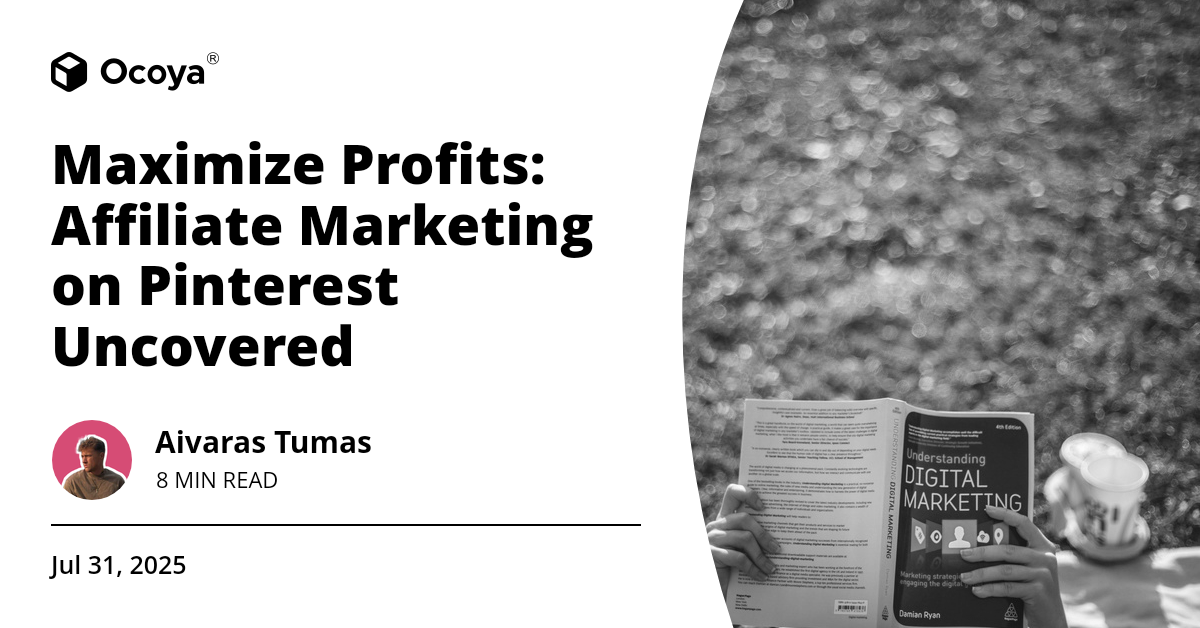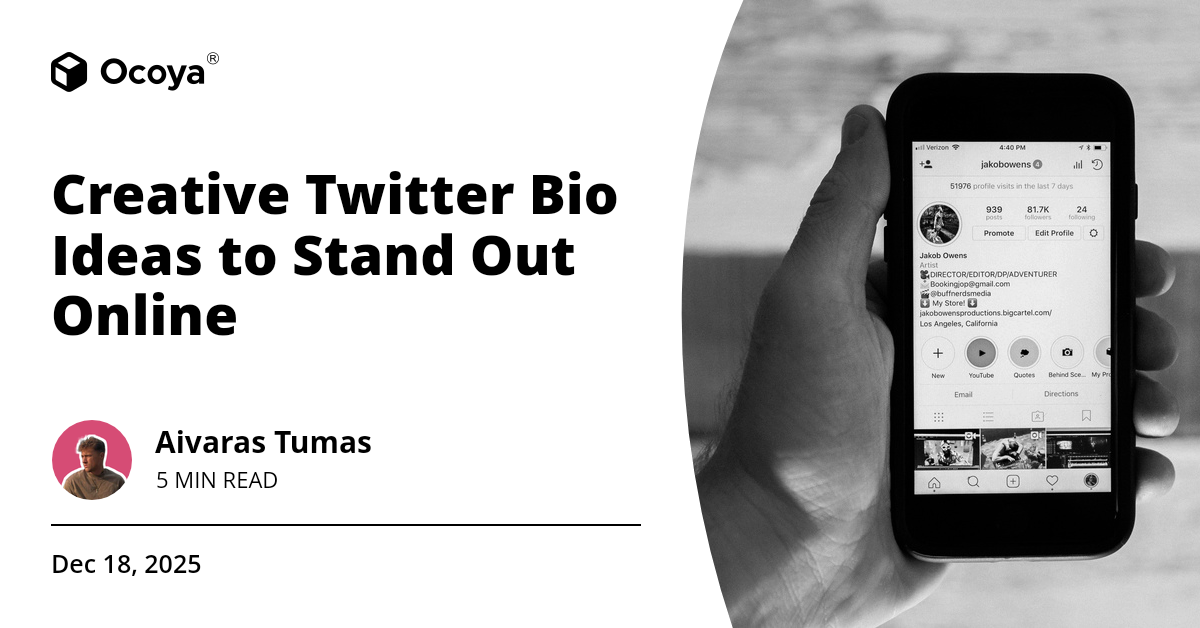
July 31, 2025
Marketing
Maximize Profits: Affiliate Marketing on Pinterest Uncovered

In the vibrant world of digital marketing, one question frequently surfaces: Is affiliate marketing on Pinterest worth it? With its visually appealing interface and vast user base, Pinterest offers companies and individuals an outstanding platform to share products and ideas. But can it truly drive significant profit through affiliate marketing? Let's dig deep into this topic and explore its potential, benefits, and challenges to offer a well-rounded view of affiliate marketing on Pinterest.
Affiliate marketing, a performance-based form of advertising, allows individuals or companies to earn a commission by promoting other people's products. When someone makes a purchase through a special link assigned to the affiliate, they receive a portion of the sales revenue. This form of marketing has long been popular on websites and blogs, but platforms like Pinterest bring an entirely new dimension to the table.
The Unique Allure of Pinterest
Pinterest is not your typical social media platform. It stands apart due to its unique focus on visual discovery and idea sharing. Users, known as "Pinners," create and share boards filled with images, infographics, and videos that catch their eye. These pins often serve as sources of inspiration for anything from home decor and fashion to recipes and business tips.
The platform's search function also sets it apart. Users engage in active searching rather than passive scrolling, like on other social media sites. People come to Pinterest with intent—whether it's to gather ideas for a wedding, find fitness routines, or discover the latest gadgets. This high level of user intent makes Pinterest a fertile ground for affiliate marketing opportunities.
The Mechanics of Affiliate Marketing on Pinterest
To understand is affiliate marketing on Pinterest worth it, you must grasp how it works on the platform. Unlike traditional URLs that could clutter your pins, Pinterest allows affiliate links directly in pins, making the process seamless for users. This feature ensures that the promotion feels more integrated and less intrusive, enhancing the likelihood that users will click through and ultimately make a purchase.
Here’s a step-by-step breakdown of how to incorporate affiliate marketing on Pinterest:
Create a Business Account
The first step is to create a Pinterest Business Account. This type of account provides access to Pinterest Analytics, which is essential for tracking the performance of your affiliate marketing efforts.
Select Relevant Niches
Choosing the right niche is crucial. Your pins should align with your audience’s interests. Ideally, you should focus on niches where you have expertise or a strong interest, and which offer a good supply of high-quality affiliate products.
Create High-Quality Pins
Visual appeal is king on Pinterest. Invest time and resources in creating eye-catching pins that showcase the product effectively. Use high-resolution images and professional designs to make your pins stand out.
SEO Optimization
Optimize your pins for keywords. Pinterest is a powerful search engine in its own right, so using relevant keywords in your pin descriptions, board titles, and profile information is crucial for visibility.
Add Affiliate Links
Incorporate affiliate links into your pins. Make sure the links are relevant and add value to the user. For instance, if you're pinning a recipe, add an affiliate link to the specific utensils or ingredients used.
Engage with Followers
Interaction is vital for success. Respond to comments and engage with followers to build a community. A dedicated community is more likely to trust your recommendations, increasing the chances of affiliate link clicks.
Track Performance
Monitoring performance is critical. Use Pinterest Analytics to track which pins are performing well and adjust your strategy accordingly. Focus on replicating successful pins and improving underperforming ones.
Benefits of Affiliate Marketing on Pinterest
Understanding the benefits can further help answer the query, is affiliate marketing on Pinterest worth it. Here are several advantages:
High-Intent Traffic
Pinners often have high purchase intent. When someone searches for "best kitchen gadgets" or "fashion must-haves," they're usually ready to buy. This high intent translates to higher conversion rates, making affiliate marketing highly effective on Pinterest.
Evergreen Content
Pins have a longer lifespan compared to posts on other social media platforms. A well-designed pin can continue to drive traffic and conversions months after it’s first posted, providing longevity to your marketing efforts.
SEO Benefits
Pinterest functions as a visual search engine. By optimizing for keywords, you can tap into search traffic that might not be accessible through traditional SEO methods. This opens up new avenues for audience reach beyond conventional search engines.
Cost-Effective
Getting started with affiliate marketing on Pinterest usually requires minimal investment. Creating pins can be done through free or low-cost design tools, and there are no fees to post on Pinterest. This low barrier to entry makes it an ideal platform for beginners.
Scalability
Once you’ve honed your strategy, you can easily scale your efforts. Create more boards, pin more frequently, and tweak your SEO strategies to continually grow your audience and increase your income streams.
Challenges of Affiliate Marketing on Pinterest
While Pinterest offers many benefits, affiliate marketing on this platform is not without its challenges:
Time-Intensive
Creating high-quality pins and maintaining an active presence on the platform requires both time and effort. Consistency is key to developing a loyal following and keeping your pins relevant.
Keeping Up with Trends
Pinterest trends can shift quickly. A topic that’s popular one month may not be the next. Staying up-to-date with current trends is essential for maintaining engagement and driving traffic to your affiliate links.
Algorithm Changes
Like any other platform, Pinterest frequently updates its algorithms. These changes can impact the visibility of your pins, requiring you to stay informed and adapt your strategies to maintain effectiveness.
Case Study: Successful Affiliate Marketing on Pinterest
To further illustrate is affiliate marketing on Pinterest worth it, let’s look at a case study of a successful Pinterest affiliate marketer. Meet Sarah, a lifestyle blogger who wanted to diversify her income streams.
Sarah started by identifying her niche—home decor. She realized that her audience loved her style and often looked to her for recommendations on home improvement products. With this insight, she began to include affiliate links in her Pinterest posts. Here’s how she did it:
Sarah created visually appealing pins with product images and promotional images showcasing different room setups, tagged with affiliate links to the featured products. She optimized her pins for keywords like "modern home decor," "DIY home improvement," and "beautiful living room designs." By adding detailed descriptions and hashtags, she ensured her content was easily discoverable.
Sarah didn’t stop there. She joined Pinterest group boards and participated actively by pinning others’ content and contributing her own. This increased her reach and follower count exponentially.
The result? Sarah saw a significant increase in blog traffic and affiliate income. Her pins remained relevant for months, continuing to drive traffic long after they were initially posted. The evergreen nature of her content allowed her to generate a steady stream of income without constant updates.
Best Practices for Affiliate Marketing on Pinterest
Adopt these best practices to maximize your affiliate marketing efforts on Pinterest:
Disclose Affiliations
Transparency builds trust. Always disclose when you’re using affiliate links. This not only maintains trust with your audience but also complies with FTC guidelines.
Use Pinterest Analytics
Leverage Pinterest Analytics to understand what works and what doesn’t. Track metrics such as pin clicks, saves, and conversions to refine your strategy continuously.
Consistency is Key
Being consistent in pinning and engaging with followers is crucial. Aim to pin several times a week to maintain visibility and relevance.
Quality over Quantity
Always prioritize the quality of your pins over the quantity. High-quality visuals and valuable content will drive more engagement and conversions than numerous low-quality pins.
Leverage Seasonal Trends
Pin content that aligns with seasons or holidays to capture temporary spikes in interest and purchasing behavior.
Collaborate with Influencers
Partnering with influencers in your niche can help amplify your reach and lend credibility to your affiliate links.
Tools to Boost Affiliate Marketing on Pinterest
Using the right tools can significantly enhance your affiliate marketing efforts on Pinterest. One such tool is Ocoya, a comprehensive AI-driven social media marketing platform. Ocoya can help streamline your Pinterest marketing efforts by offering automated content creation, scheduling posts, and detailed analytics.
With Ocoya, you can create high-quality pins effortlessly. Its AI-powered content creation tools ensure that your pins are not only visually appealing but also optimized for keywords, providing a higher chance of appearing in user searches. Scheduling pins in advance lets you maintain consistency without being glued to your screen 24/7. Plus, Ocoya’s analytics tools provide actionable insights, helping you refine your strategies for maximum conversions.
Conclusion
So, is affiliate marketing on Pinterest worth it? The answer is a resounding yes—for those willing to invest the time and effort. Pinterest offers a unique blend of high-intent traffic, evergreen content, and SEO benefits that can significantly boost your affiliate marketing efforts. While challenges do exist, they are manageable with the right strategies and tools.
Ready to take your affiliate marketing on Pinterest to the next level? Sign up for a free trial of Ocoya and discover how its advanced features can streamline your Pinterest marketing campaigns, enhance your content, and help you achieve your business goals.
Key Takeaways
- High-Intent Traffic: Pinterest users often have strong buying intent, which can lead to higher conversions.
- Evergreen Content: Pins have a long lifespan and can continue to drive traffic for months.
- SEO Benefits: Optimizing pins for keywords can attract search traffic that typical SEO might miss.
- Cost-Effective: Low barrier to entry makes it ideal for beginners.
- Consistency is Key: Regular pinning and engagement are essential for building a loyal following.
- Quality over Quantity: High-quality visuals and valuable content trump numerous low-quality pins.
- Use Tools: Tools like Ocoya can enhance your affiliate marketing efforts by automating and optimizing processes.

Continue Reading
The latest handpicked blog articles.



.svg)

.svg)







